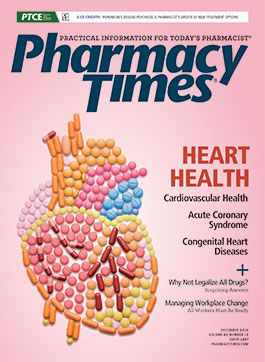Publication
Article
Pharmacy Times
Miconazole Oral Gel Drug Interactions
Miconazole oral gel is used for the topical treatment of fungal infections in the mouth, throat, and stomach.
Miconazole oral gel is used for the topical treatment of fungal infections in the mouth, throat, and stomach. Due to their low systemic absorption, drugs that are designed for topical administration usually have limited potential to cause clinically significant drug interactions. Topical nitroglycerine and fentanyl are 2 examples of topically applied drugs that are designed to provide plasma drug concentrations that produce systemic effects. Interactions involving drugs that alter the response to nitroglycerine and fentanyl are well known. Over the years, evidence has accumulated indicating that miconazole oral gel is responsible for a growing list of potentially harmful drug interactions.
CYP2C9 SUBSTRATE: WARFARIN
Reports of orally administered miconazole potentiating the effect of warfarin have been in the medical literature for nearly 35 years.1 Since the first report, there have been numerous cases of patients stabilized on warfarin who experienced an increased anticoagulant response when miconazole oral gel was coadministered.2-8 In all of the cases, elevated international normalized ratios were usually noted within 7 to 14 days of initiating miconazole oral gel. Some of the patients also reported such complications as hematuria, epistaxis, and bruising. As is often an issue with warfarin drug interaction case reports, important information necessary to determine causation was absent from several of the reports. However, a prospective trial designed to determine the effect of oral miconazole on warfarin pharmacokinetics has been done.9 Six healthy subjects received a single oral 0.75-mg/kg dose of warfarin alone or following 3 daily 125-mg doses of miconazole tablets. The mean area under the warfarin concentration time curve (AUC) increased 3-fold, and plasma clearance of warfarin was reduced 68% following miconazole administration. The AUC of the more potent enantiomer of warfarin, (S)-warfarin, increased more than 4-fold, and its half-life increased from 35 to 135 hours. The increased warfarin plas- ma concentrations were accompanied by increased prothrombin times. The mechanism of this interac- tion appears to be miconazole-induced inhibition of CYP2C9. Other drugs that are substrates for CYP2C9 include nonsteroidal anti-inflammatory drugs, glip- izide, glyburide, phenytoin, rosiglitazone, tolbutamide, and zafirlukast. Patients receiving these agents plus miconazole should be monitored for possible adverse reactions.
OTHER CYP P450 SUBSTRATES
Miconazole has been shown to inhibit several CYP450 enzymes (CYP2B6, CYP3A4, CYP2C9, CYP2C19, CYP2D6) during in vitro studies. Although clinical data on the effect of miconazole on drugs other than warfarin are sparse, the effect of miconazole oral gel on oxycodone was studied in 12 subjects.10 A single 10-mg oral dose of oxycodone was administered alone and following 85 mg of miconazole oral gel 3 times daily for 4 days. The mean AUC of oxycodone was increased by 63% with miconazole oral gel pretreatment. Conversion of oxycodone to oxymorphone was reduced. Miconazole has also been reported to increase the plasma concentrations of tacrolimus and cyclosporine by 108% and 45%, respectively.11 Based on the results of 2 studies, miconazole may interact with other CYP3A4 substrates, particularly those with a high firstpass metabolism.
SUMMARY
Miconazole appears to have the potential to interact with multiple drugs. The administration of miconazole oral gel eventually results in the drug entering the gastrointestinal tract, where some of it is absorbed. Relatively high concentrations could occur in the intestinal wall and portal vein, reducing the first-pass metabolism of other drugs administered orally. Buccal absorption of miconazole is also possible, especially if there is local inflammation, which may increase the permeability of the oral mucosa. Miconazole should be considered to have a drug interaction potential similar to other azole antifungals, such as itraconazole, voriconazole, and ketoconazole. Patients using miconazole oral gel should be carefully evaluated for potential drug interactions.
Drs. Horn and Hansten are both professors of pharmacy at the University of Washington School of Pharmacy. For an electronic version of this article, including references, visit hanstenandhorn.com.
References:
1. Watson PG, Lochan RG, Redding VJ. Drug interaction with coumarin derivative anticoagulants. Br Med J (Clin Res Ed). 1982;285(6347):1045-1046.
2. Silingardi M, Ghirarduzzi A, Tincani E, Iorio A, Iori I.. Miconazole oral gel potentiates warfarin anticoagulant activity. Thromb Haemost. 2000;83(5):794-795.
3. Pemberton MN, Sloan P, Ariyaratnam S, Thakker NS, Thornhill MH.. Derangement of warfarin anticoagulation by miconazole oral gel. Br Dent J. 1998;184(2):68-69.
4. Shenfield GM, Page M. Potentiation of warfarin action by miconazole oral gel. Aust N Z J Med. 1991;21(6):928.
5. Pemberton MN, Oliver RJ, Theaker ED. Miconazole oral gel and drug interactions. Br Dent J. 2004;196(9):529-531.
6. Miki A, Ohtani H, Sawada Y. Warfarin and miconazole oral gel interactions: analysis and therapy recommendations based on clinical data and a pharmacokinetic model. J Clin Pharm Ther. 2011;36(6):642-650. doi: 10.1111/j.1365-2710.2010.01229.x.
7. De Pauw A, De Backer T. Miconazole buccal gel and risk for systemic bleeding: how certain topical formula can interfere with anticoagulants. Acta Clin Belg. 2015;70(2):121-123. doi: 10.1179/2295333714Y.0000000089.
8. Murakami S, Tanaka A, Ido K, Tanaka M, Araki H. Prolonged effects of miconazole oral gel on warfarin anticoagulation even after treatment withdrawal. Int J Clin Pharmacol Ther. 2016;54(6):474-476. doi: 10.5414/CP202597.
9. O'Reilly RA, Goulart DA, Kunze KL, et al. Mechanisms of the stereoselective interaction between miconazole and racemic warfarin in human subjects. Clin Pharmacol Ther. 1992;51(6):656-667.
10. Gronlund J, Saari TI, Hagelberg N, Neuvonen PJ, Olkkola KT, Laine K.. Miconazole oral gel increases exposure to oral oxycodone by inhibition of CYP2D6 and CYP3A4. Antimicrob Agents Chemother. 2011;55(3):1063-1067. doi: 10.1128/AAC.01242-10.
11. Ishiwata Y, Nagata M, Arai T, et al. Effects of miconazole oral gel on blood concentrations of tacrolimus and cyclosporine: a retrospective observational study. Ther Drug Monit. 2016;Aug 23. [Epub ahead of print].







